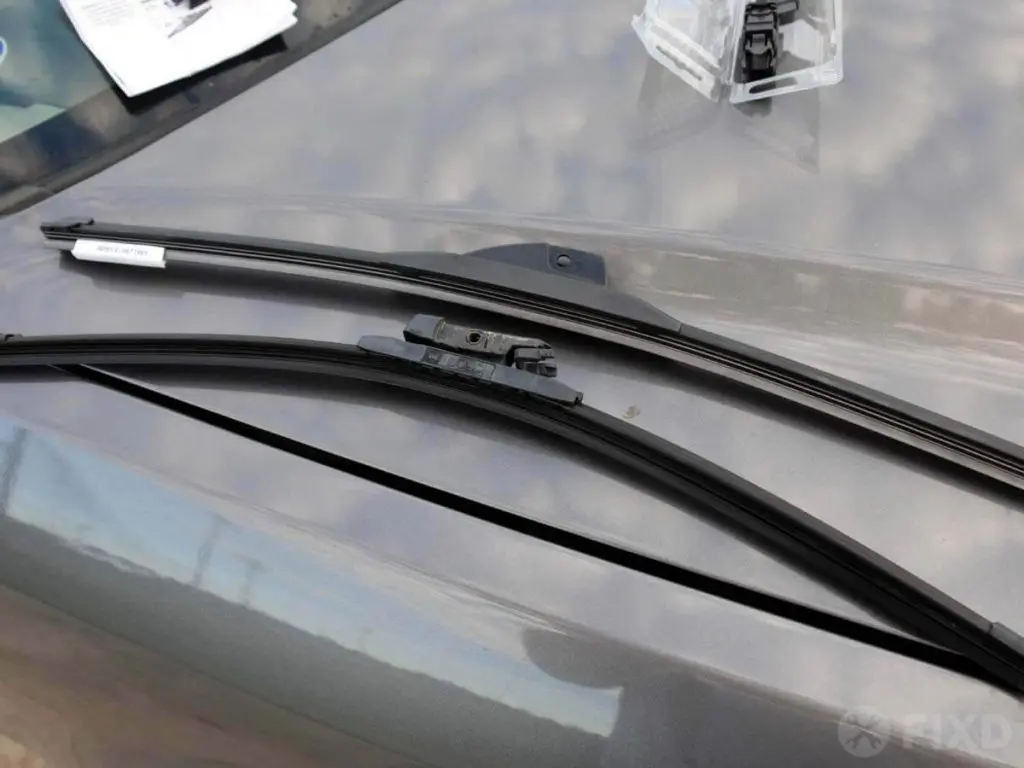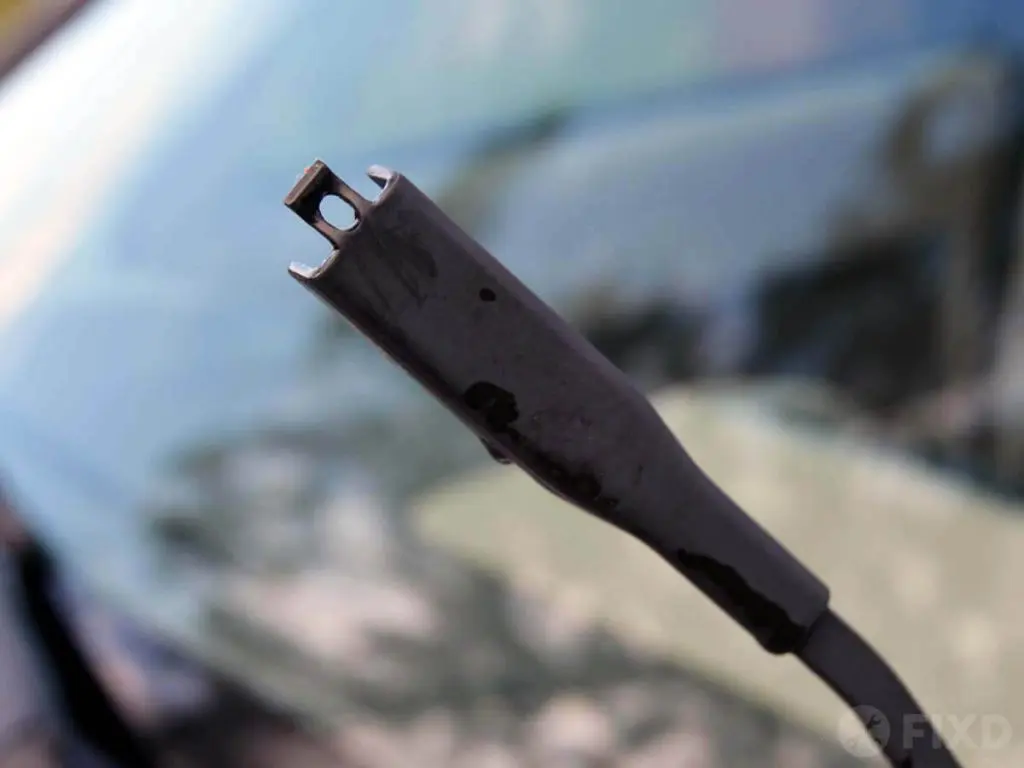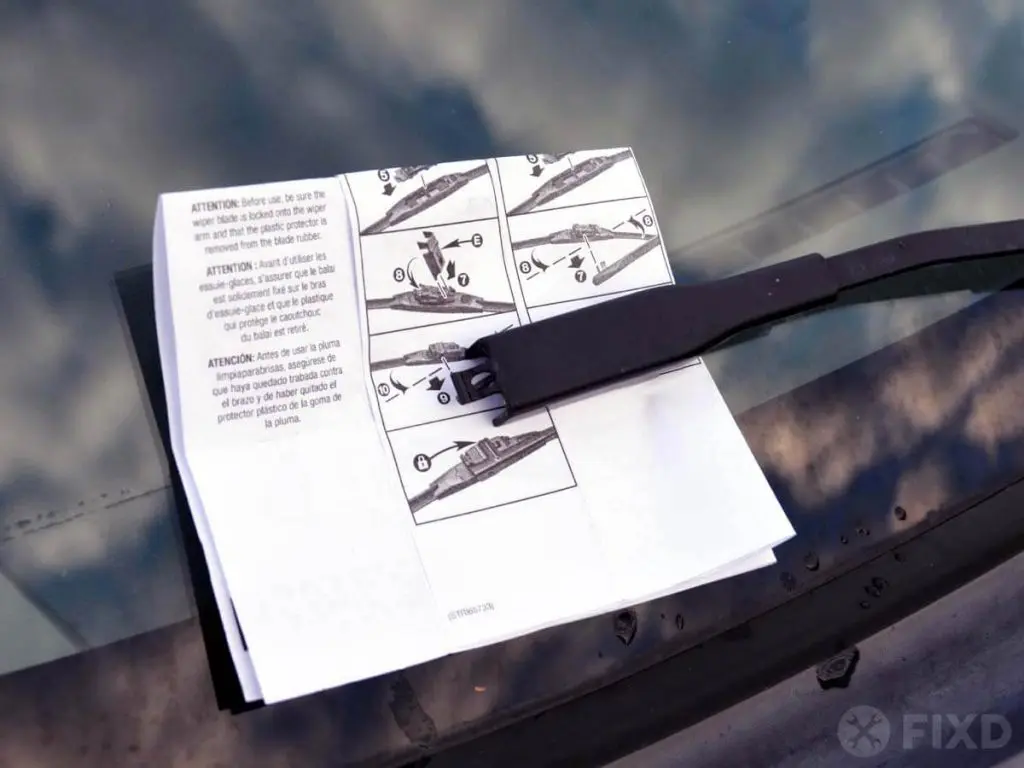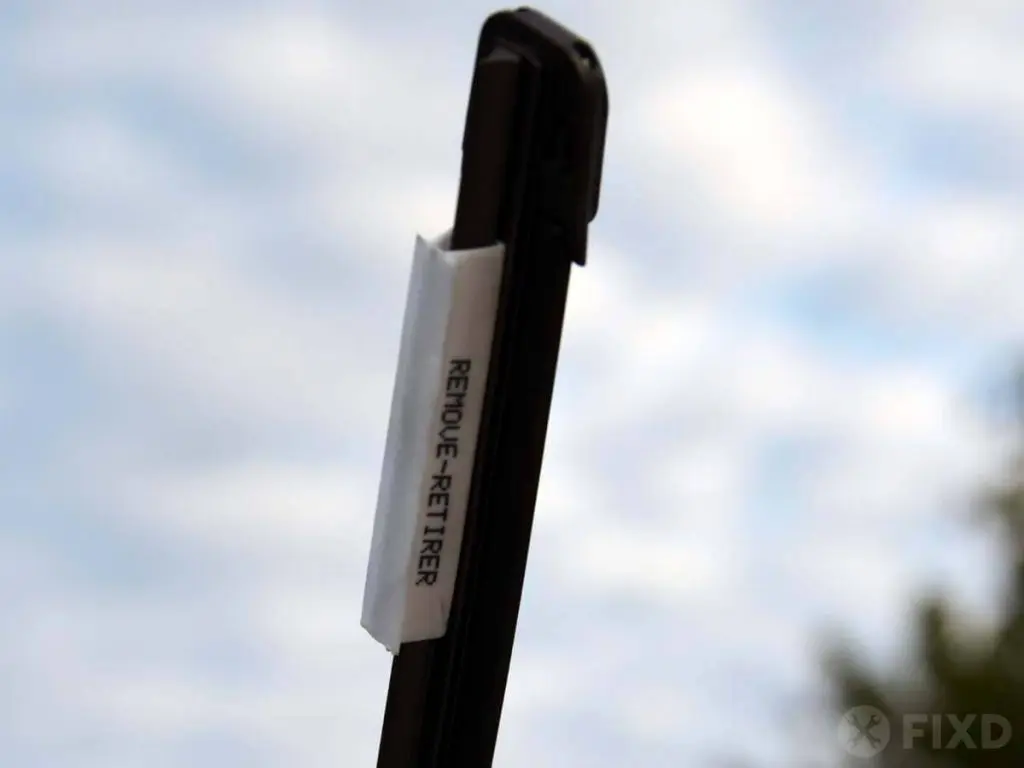Replacing Your Windshield Wipers Is a Quick and Easy Project for Beginner DIYers. Here’s Everything You Need to Know to Install New Wipers Yourself.
- DIY Difficulty Level: beginner
- Cost: $75-$82 at the mechanic including labor, $20-$50 to DIY
- Time Required: less than 30 minutes
- Tools & Materials: since most windshield wipers are universal, tools generally aren’t needed and all the materials required for installation comes in the package.
When it comes to preventative car maintenance, most drivers don’t think about their windshield wipers until they’re performing poorly, falling apart, or making a screeching sound as they scrape across the windshield.
As someone who tends to install windshield wipers only when they start to show signs of wear, I was surprised that auto parts stores and windshield wiper manufacturers recommend replacing them every six to 12 months. Putting on new blades that often might be an added expense, but you don’t want to get stuck in a rainstorm with worn-out wiper blades!
Turns out, replacing your windshield wipers is easier than replacing the air cabin filter, and it’s a cheap job to DIY. Here’s a quick lesson on how to install windshield wipers, how often to replace them, and how much you can expect to spend, plus a step-by-step video walkthrough to make changing your wipers a breeze.
How Often to Replace Windshield Wipers
 Raise the windshield wiper arms like this to remove the wiper blades
Raise the windshield wiper arms like this to remove the wiper blades
Most windshield wiper blade manufacturers suggest replacing your wipers at least once a year. However, many blades can last longer than 1-2 years. Since offering to install new windshield wipers after a heavy downpour is an easy way for mechanics to upsell you extra work, it’s important to know when to replace them.
If your wipers cleanly wick away water without leaving streaks on your windshield, they’re still good to go. Be sure to check your windshield wipers regularly as you don’t want to wait for the rubber to separate or for the wiper blades to make streaks or screeching noises when in use.
At best, worn-out wiper blades can cause damage to your windshield, which is an expensive repair especially when considering how affordable the blades are in the first place. At worst, failed wiper blades can impair your visibility in rainy and snowy conditions, putting you and other drivers at risk.
How to Choose the Best Windshield Wiper Blades
Whether you buy your windshield wiper blades in an auto parts store or online, the selection can be overwhelming. Wiper blades are categorized by length in inches, and size charts for both front and rear wipers are found in auto parts stores and online. Simply search for your make and model. You can also consult your owner’s manual for this information.
The answer for how to choose the best windshield wiper blades comes down mainly to price point. Walking down the windshield wiper blade aisle at any parts store can be overwhelming when it comes to selection, so start by determining your budget. There are plenty of wipers that get the job done for around $20 (per blade). We’ve also put together a list of the best windshield wipers and what to look for to help with the buying process.
The most affordable option is replacing just the rubber part of the wiper blade and reusing the metal or plastic wiper arm, but this is actually more labor intensive than just replacing the entire wiper blade/arm assembly.
 Comparison between new and old wiper blades
Comparison between new and old wiper blades
Tips for Maximizing the Life of Your Windshield Wipers
- Keep the windshield clean – that way when you do need the wipers, the rubber doesn’t get damaged by contaminants.
- Clean the wiper blades – when washing your car, don’t forget to lift up the blade and wipe off the cleaning surface of the blade.
- Avoid parking in the sun – this isn’t possible for all vehicles, but keeping cars parked in the shade or garage will lengthen the life of the windshield wiper blade.
- Don’t use wipers to clear ice/snow – not only is this bad for the wiper blades themselves, it could also damage the wiper arm and wiper motor.
- Keep windshield washer reservoir filled – when using your wipers to clean something from the windshield, be sure to spray the fluid before engaging the wipers.
How to Install Your New Windshield Wiper Blades
Check out the video below to see just how easy it is to install your windshield wiper blades, but please do not attempt any wiper blade sword fighting at home.
 Detailed closeup showing the end of the windshield wiper arm
Detailed closeup showing the end of the windshield wiper arm
Once you’ve selected the right wiper blades for your vehicle and your budget, the hard part is over! The first step to install wiper blades is to remove the old ones. There are different designs when it comes to attaching the wiper blade to the wiper arm depending on the make and model of your vehicle. These include hook, pin, or straight end designs, but most wiper blade refills are universal so they should have attachments for all three options.
Pro Tip: When installing new wiper blades, slowly lower the wiper arm onto the windshield protected by a rag or piece of paper as shown below. Doing so will avoid the spring-loaded arm from accidentally falling down and damaging the windshield.
 Lower wiper arm while preparing new wiper blade, and use paper or rag to protect glass
Lower wiper arm while preparing new wiper blade, and use paper or rag to protect glass
Step 2: Remove the plastic protector from the windshield wiper blade.
 Some windshield wipers come with blade protectors that must be removed
Some windshield wipers come with blade protectors that must be removed
Some replacement wipers have a plastic protector mounted on the blade’s rubber edge. If that’s the case, be sure to remove this before testing out the new windshield wipers.
Step 3: Set up an automatic reminder to replace your windshield wipers with FIXD.
Remembering when to replace your windshield wipers can be a hassle, but FIXD has you covered! The free FIXD app can help you keep track of maintenance items including tires, oil changes, and windshield wipers. It’s easy to set up in a few minutes under the Maintenance tab in the app, so you know when it’s time for the next replacement. Don’t get caught in the rain with worn out windshield wipers!
How Much Does it Cost to Replace the Windshield Wiper Blades?
The average cost to have windshield wipers replaced at a repair shop is $49 in parts (for all blades) and between $26 and $33 in labor costs, for a total of $75-$82. Knowing how to install windshield wipers yourself, though, is quick and easy, and can save you lots of money. Spend as little as $20 per blade, depending on which brand you choose.
Stay Safe and See Clearly!
As you can see, replacing the windshield wiper blades on your car is quick and easy. Installing them yourself will save you money, but more importantly, it will keep you safe with better visibility in rainy, snowy, or foggy weather conditions.
Other Common Car Repair Costs Transmission oil change cost Car AC recharge cost Average cost for front brake job Cost to replace spark plugs Timing chain replacement

Lifelong automotive enthusiast with a soft spot for offroading. Wrencher turned writer, but I still love to tinker on just about anything with an engine. Dream car: tie between a ‘71 Hemi ‘Cuda and a ’91 GMC Syclone. #GirlDad #SaveTheManuals














